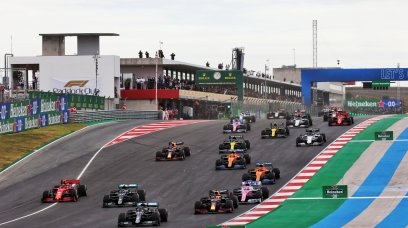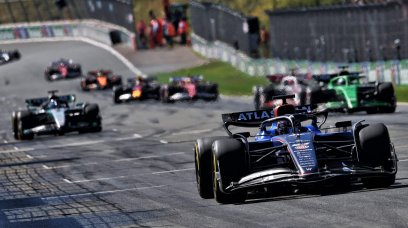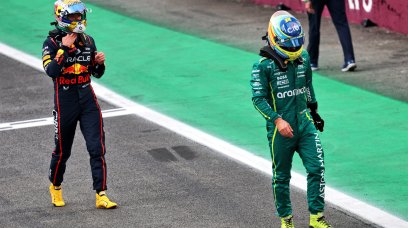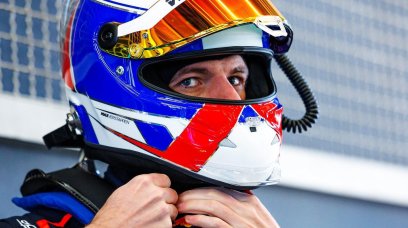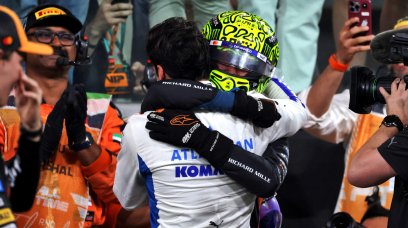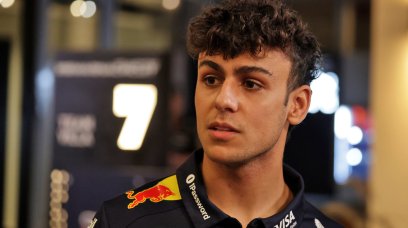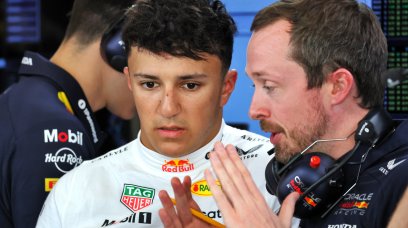Mercedes turned heads when they appeared at the second pre-season test with the zero side-pod concept on the W13. It was billed as the silver bullet that would make them challenge for a record ninth Constructors' title and enable Lewis Hamilton to set the record straight after the conclusion of the 2021 season. During the initial pre-season tests it appeared to work well, but many thought the team was sandbagging - as is the usual custom for a team before the start of a season. But the harsh reality sunk in for the team at the first race in Bahrain, when Hamilton was nearly a second off the pace of Charles Leclerc and Max Verstappen. The team knew that it had challenges to overcome as Chief Technical Officer, James Allison, explained at the beginning of the season in their Bahrain debrief video. "We are carrying a lot of problems, but all of those problems carry solutions and all of those solutions are within our compass to deliver," he explained. "Yes it is challenging, but after winter testing I feared worse."
Porpoising nerfs performance
The main factor that contributed to the early lack of pace for Mercedes was the porpoising effect. For 2022 the cars relied more on the ground effect to generate the downforce, but in trying to achieve the maximum amount the cars suffered from an unintended consequence: porpoising. This is where the car was being sucked to the ground, then sprung back up by the stiff suspension. Mercedes opted for a complex floor design that left the car more sensitive to crosswinds , along with the car bouncing tremendously in high speed corners. Both Hamilton and George Russell looked visibly exhausted after races on several occasions. The team trialled some drastic solutions early on for the W13 at Bahrain and Jeddah , including raising the ride height - but that induced more drag and compounded their straight line speed issues. Allison admitted the team had to throw away "basic performance" in their Bahrain debrief video, while trying to understand what turned out to be a fundamental problem with their floor design . "We were caught out by it quite badly and the amount of porpoising on our car, especially when we put our first race upgrade on in the last winter test, has been quite extreme," he said. "We're starting to get it under control, but at the moment we're having to throw away the basic performance on our car." When they got to Imola, both drivers also admitted to having to brake earlier due to the issues posed by the porpoising. It also later emerged that it was having adverse effects on the power unit , although that did not affect overall reliability in the season. The team called for a regulation changes in the coming races, claiming that the porpoising was dangerous, could lead to crashes, and might have unintended consequences on their drivers' health due the violent shaking in the cockpit. After consultation with other teams and the FIA, the governing body agreed to raise the floor edges by 25mm in 2023, and teams were told to make the floors stiffer to stop any advantage being gained from flexi floors. While it wasn't the dream gain in performance Mercedes was expecting to make, it was a step forward in making progress.
Drag affected car performance
The other factor for Mercedes was running the car in low downforce settings, which contributed to one of their worst weekends of the season. The Belgian Grand Prix saw both drivers complain about their struggles , as the inconsistencies in the high speed corners affected their confidence. Motorsport Strategy Director, James Vowles, admitted post-Spa in their debrief video that the team went with a rear wing setup that severely compromised their straight line speed. "Spa is one of those circuits that is a fine balance, where Sector 1 and Sector 3 it is rewarded, compared to Sector 2 where you can just maximise your corner speeds," he said. "For us we tried a few options with the rear wing and went for the one that we thought preserved the tyres the most. That ended up being the one that was the slowest in a straight line." The next race at Zandvoort proved to be a lot better for Mercedes, as they could maximise the downforce without needing to compromise on straight line speed. According to Trackside Engineering Director, Andrew Shovlin, this led to them being able to get the car into a better working window and enable greater confidence for their drivers. "In Zandvoort the car was easier to get into the right window, it was riding well and wasn't bouncing over the bumps," he said after the Dutch GP. "That gave the drivers confidence and we probably had our most competitive weekend all year."
Setup struggles
The W13 earned the reputation of being a 'diva' according to Toto Wolff , as the team often struggled to find the right setup during Friday practice sessions - particularly in changeable conditions. This would eventually sort itself out by the time they reached qualifying, but the consistency still was not there. At some tracks they performed worse than expected, namely Singapore where they expected to achieve their first victory as Technical Director, Mike Elliott said the track layout suited them the most. "It's a bumpy track and that will bring challenges," he said at the time. "But the nature of the corners should fit better with our car." It turned out to be another tricky weekend for them due to the conditions in qualifying which "magnified" the problems on the car according to Hamilton. "I think our car, whatever the problems that we have with it, it's magnified in the rain. It's a very, very hard car to drive in the rain," he said after the race. Hamilton finished 9th behind Sebastian Vettel, while Russell suffered his worst weekend of the 2022 season.
How Mercedes developed a winning car
The big turning point for the team came in the last quarter of the season, when the team brought their final aero upgrades . Hamilton admitted that the car was getting "better and better" by this stage of the season. "I really enjoyed driving around the track, because the car is feeling better and better as we learn to understand it in more detail," he said at Mexico. These changes, coupled with the earlier floor revamp, put Mercedes back in contention for race wins. Both races in Austin and Mexico saw Mercedes qualify within half a second of Red Bull, as they beat Ferrari on merit during those weekends. But poor tyre choices in the weeks prior to the race , subsequently affected their strategy options in the races according to Vowles. "The decision for what tyres we had available actually stems all the way back to the week before the race," he said after the US GP. "We thought the Hard tyre would be the more useful compound, it certainly was the year prior and we thought the Soft would be too weak. "What Red Bull were able to do and Charles Leclerc, is they went in with three Soft tyres but also had a qualifying car that was a little faster than our own - fast enough that you could take that risk." This meant the team had to wait until Brazil before their efforts to right the problems with the W13 were rewarded with a Grand Prix and Sprint victory double at Interlagos.
Mercedes still need to take a vital step
Even though the win was a boost after a character-building season for the team, the final race in Abu Dhabi proved that Mercedes is still not capable of challenging for wins anytime and anywhere. The efforts to understand the W13 should translate into performance in 2023 , according to George Russell. But there is no love lost from Toto Wolff, who joked that one of the worst-performing cars in Mercedes' recent F1 history will have a "special place" at their museum .
Most read
